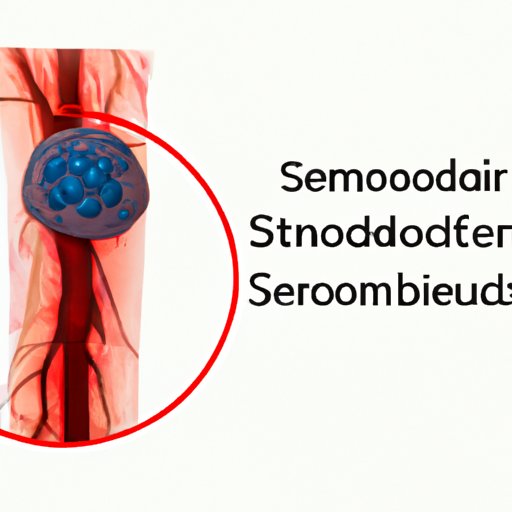
I. Introduction
Scleroderma is a rare autoimmune disease that affects the connective tissues and blood vessels of the body. The disease can vary in form and severity, making it hard to diagnose and manage. Its symptoms often develop gradually, and the cause is still not understood. This article takes an in-depth look at scleroderma disease, its types, warning signs, diagnosis, and management options.
II. Understanding Scleroderma Disease
Scleroderma can affect various parts of the body, including the skin, joints, and internal organs. The disease causes the body’s immune system to attack its tissues, leading to the buildup of collagen and scarring. When this happens, the skin and other connective tissues become thick and hard, causing mobility problems and pain.
There are two main types of scleroderma – localized scleroderma and systemic scleroderma. Localized scleroderma affects only the skin, while systemic scleroderma can affect internal organs such as the digestive system, the lungs, and the kidneys. Systemic scleroderma is further divided into two subtypes – limited cutaneous systemic scleroderma, which affects the skin on the hands, face, and feet, and diffuse cutaneous systemic scleroderma, which involves the skin on the chest, abdomen, and upper arms.
III. Differentiating Systemic Scleroderma and Localized Scleroderma
Generally, localized scleroderma is less severe than systemic scleroderma, as it only affects the skin and rarely damages the internal organs. Systemic scleroderma, on the other hand, can affect various organs, and its symptoms can be severe. Most patients with localized scleroderma have one or two patches of thickened skin, while systemic scleroderma patients often experience tightening of the skin across the torso and limbs.
IV. Symptoms and Warning Signs of Scleroderma
The symptoms of scleroderma can vary widely, depending on the type and severity of the condition. Generally, the early warning signs of scleroderma may include:
- Swelling in the hands and feet
- Joint pain and stiffness
- Skin thickening and hardening
- Raynaud’s phenomenon – discoloration of the fingers and toes when exposed to cold temperatures or stress
- Ulcers or sores on the fingertips
As scleroderma worsens, patients may develop additional symptoms. These can include digestive problems, breathing difficulties, and changes in heart rhythm.
V. Diagnosing Scleroderma
Scleroderma is challenging to diagnose, as the symptoms are often common to other conditions. Doctors will typically consider the patient’s symptoms, run blood tests, and perform physical exams to make a diagnosis. In some cases, doctors may also use imaging techniques, such as X-rays or CT scans, to get a better view of the affected organs. Early detection of scleroderma is essential to managing the disease effectively, so prompt diagnosis is crucial.
VI. Current Treatments for Scleroderma Disease
Currently, there is no cure for scleroderma, but there are several treatments that can ease its symptoms. Treatment options depend on the severity of the disease and the systems involved. A combination of treatments is often used to address various symptoms.
Treatments can include medications such as immunosuppressants, blood pressure medication, or pain relievers. Lifestyle changes such as exercise, managing stress, and avoiding exposure to cold temperatures can help alleviate symptoms of the disease. Additionally, physical therapy, occupational therapy, and emotional support can also help reduce the impact of the disease on daily life. Alternative therapies, such as acupuncture and relaxation techniques, may also provide some relief for scleroderma patients.
VII. Factors that Increase One’s Risk of Developing Scleroderma
Although the cause of scleroderma is still not well understood, certain factors can increase a person’s risk of developing this disease.
Firstly, scleroderma is more common in women than in men, and it typically occurs between the ages of 30 and 50. Some ethnic groups, like African Americans and Native Americans, are more likely to develop scleroderma than Caucasians. Family history can also increase the likelihood of developing the disease.
Secondly, environmental factors like exposure to toxins, solvents, or certain medications may increase the risk of developing scleroderma. In some cases, an injury may trigger the disease. Additionally, people with other autoimmune diseases like rheumatoid arthritis, lupus, or Sjogren’s syndrome are more likely to develop scleroderma.
VIII. Conclusion
Scleroderma is a complicated disease that requires proper management to minimize its impact on the body. It is important to see a doctor if you experience any symptoms of the disease, especially if they persist or worsen over time. Diagnosis is challenging, but early detection is critical to successfully managing the disease. The available treatments can help ease symptoms and make life more manageable for scleroderma patients.
If you have scleroderma or know someone who does, support groups or organizations can provide additional resources and support.





